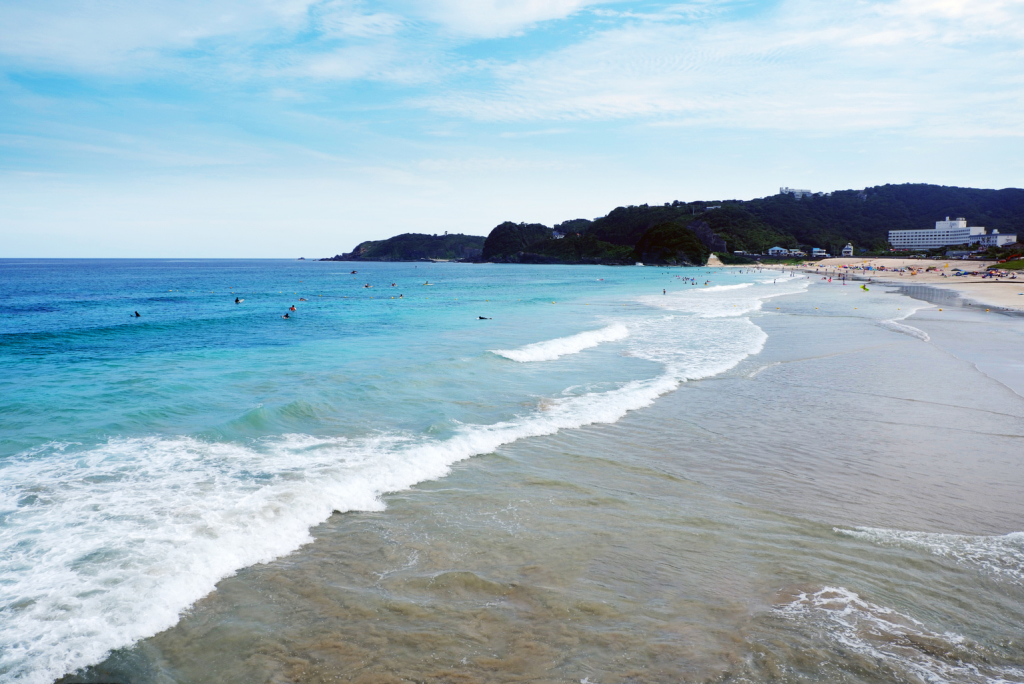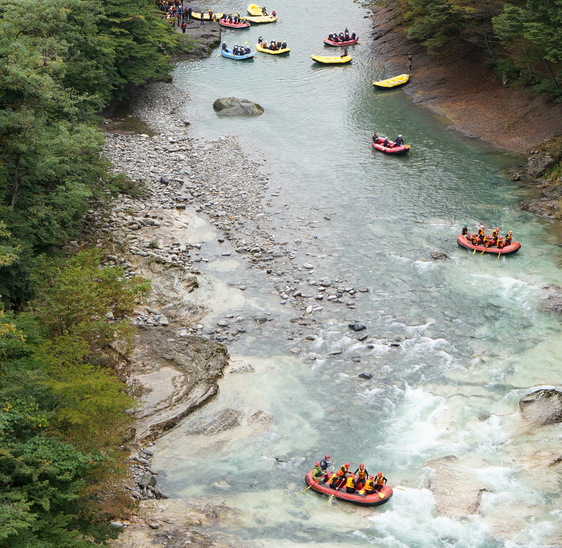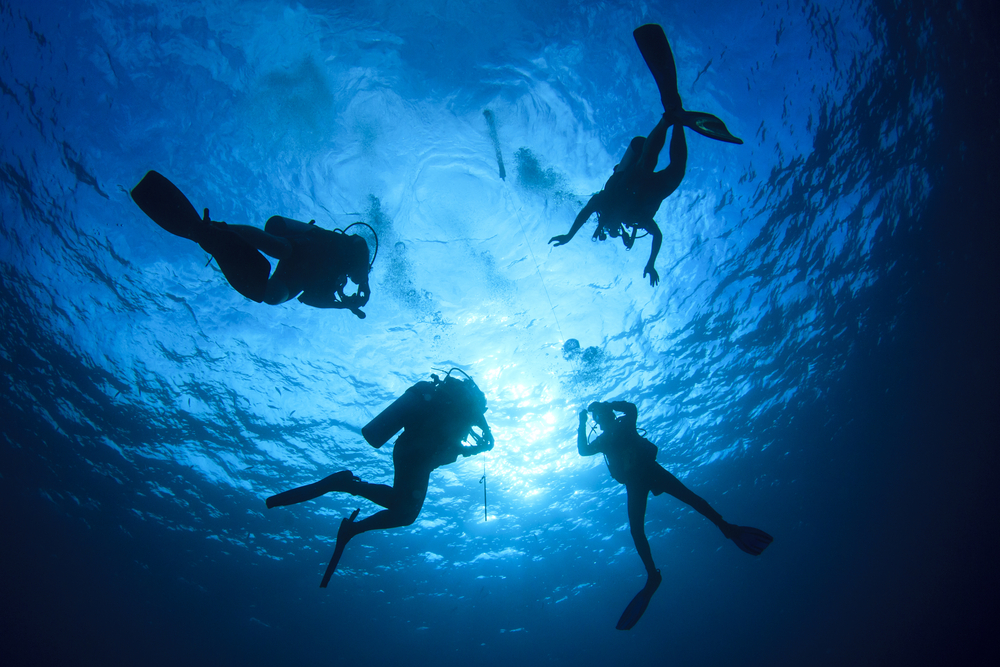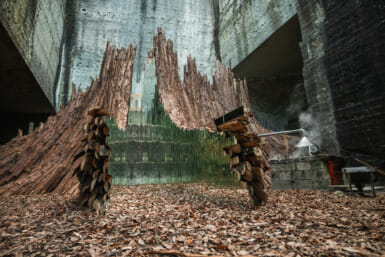While Tokyo swelters in its mid-summer heat and humidity, weekends and holidays present the perfect opportunity to get out of the city and find relief in cool waters. From the sea to rivers to water parks, there are many day or weekend trips from Tokyo to choose from.
Top water park: Tokyo Summerland, Tokyo
For some fun in the sun, grab your friends and head to the most famous water park in the region, Tokyo Summerland. The park has four sections: an outdoor sports area, an amusement park called Thrill Mountain, an indoor pool called Adventure Dome, and an outdoor pool area called Adventure Lagoon.
Open only from July 1 to September 30, Adventure Lagoon is the best area to head to in summer. Thrill-seekers will love the newest addition to the park, Dekasla. This attraction shoots out rafts of people from a pitch black tunnel into an enormous 24-metre-high funnel where they coast back and forth before dropping down into a pool. Or, for something more relaxing, the 650-metre-long lazy river pool—the largest of its kind in Japan—takes a leisurely 30 minutes to float around.
Note: people with tattoos are not permitted to enter the park.
How to get there:
Take the JR Chuo Line from Shinjuku to Haijima Station (42 minutes). Transfer to the JR Itsukaichi Line and get off at Akigawa Station (10 minutes). Then, take a bus bound for Tokyo Summerland (10 minutes).
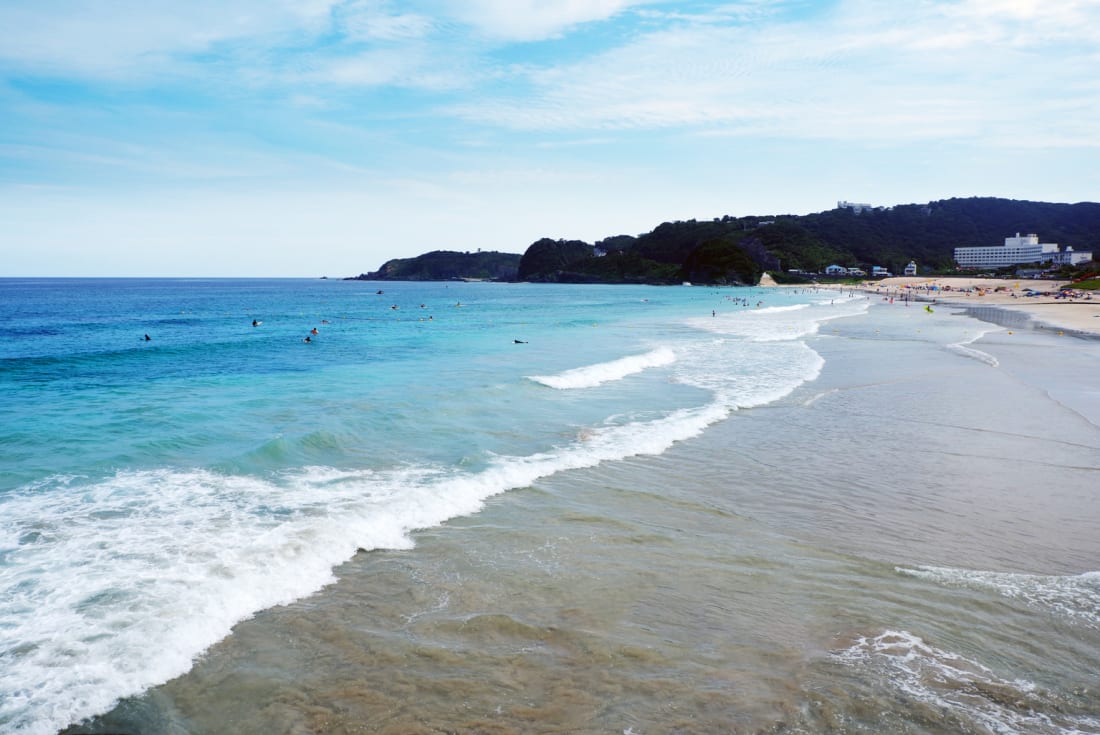
Photo by Celia Knox
Top beach: Shirahama Beach, Shizuoka
The Izu Peninsula is the perfect destination for a refreshing weekend getaway. Less than three hours south of Tokyo, it is a place brimming with natural beauty, and most notably, some of the country’s most stunning beaches.
Shirahama is the most popular beach in Izu. Known for its soft, white sand and clear, turquoise-blue water, it is an idyllic sight one usually associates with the subtropical islands of Okinawa. The 770-metre-long beach is large enough that you can easily find your own spot, and there are showers and shops renting out beach umbrellas and bodyboards. The swimming season typically runs from mid-July to late August, with lifeguards on duty from 8am to 5pm.
How to get there:
Take the JR Super View Odoriko from Tokyo to the last stop, Izukyu-Shimoda Station (two hours 46 minutes). From Shimodaeki Bus Stop, take the bus bound for Itadoichiki to Shirahamakaigan Bus Stop (10 minutes). From there, it’s a one-minute walk to the beach.
Top rafting excursion: Minakami, Gunma
For a thrilling, wet and wild day, make your way to Minakami in Gunma. Surrounded by breathtaking mountains and lush forest, a 12-kilometre stretch of the Tone River offers some of the best whitewater rafting in the country. The rapids are more powerful in spring when the snow in the mountains melts and fills the river. For beginner or casual rafters, summer is more ideal as the conditions are not too extreme.
Half-day rafting excursions typically last three to four hours, and include a safety talk, rafting and fun activities in the water. Prepare yourself for ice cold water, even in summer. Rafting companies, such as Canyons, provide a change room and all of the necessary gear — just bring your swimwear and a towel.
How to get there:
Take the bullet train from Tokyo to Jomokogen Station (66 minutes). Then, take the rafting company’s shuttle bus to the meet point (25 minutes).
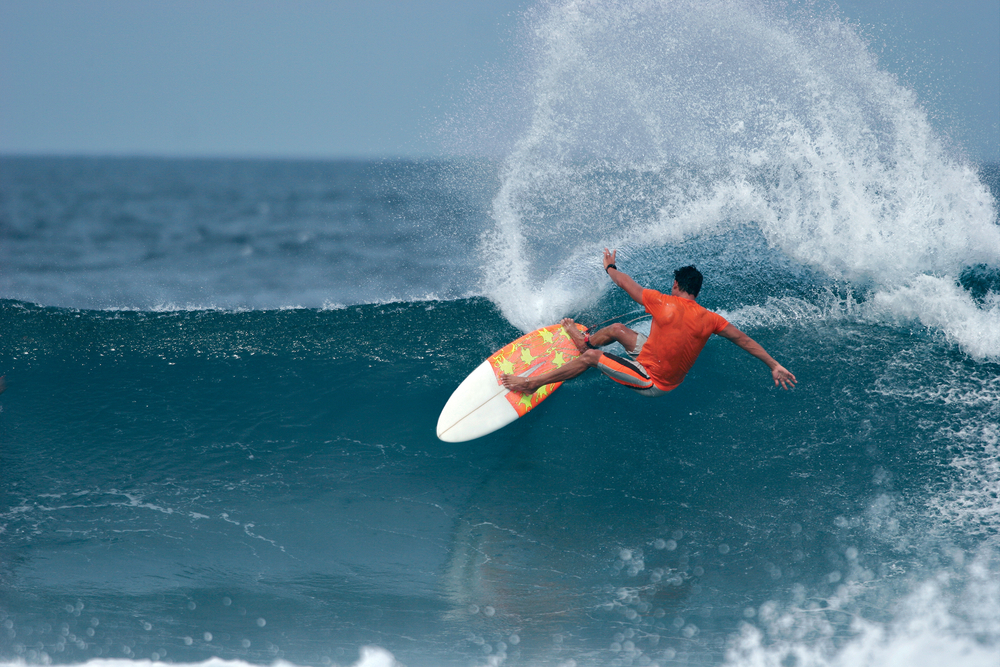
Top surf spot: Onjuku Beach, Chiba
Surf’s up! The 2020 Tokyo Summer Olympic Games will see the debut of a brand new Olympic sport: surfing. While Japan isn’t commonly thought of as an international surfing destination, the east coast of the Boso Peninsula in Chiba boasts some impressive swells. The Olympic surfers will be competing at Shidashita Beach, and just south from there is the very popular and easily accessible surf spot, Onjuku Beach.
During the height of summer, the laidback town of Onjuku sees thousands of people from the metropolitan area come and enjoy everything it has to offer. A beautiful, wide beach curves around the south-facing bay, producing waves that are perfect for longboards, shortboards, bodyboards and even stand-up paddle boards. The busiest time out on the water tends to be July and August, with the surf season lasting until the end of the typhoon season in October. If you’re new to surfing, lessons in English are offered by local companies such as Flying Sumo Surf Co.
How to get there:
Take the JR Limited Express Wakashio from Tokyo to Onjuku Station (85 minutes). From there, it’s a 10-minute walk to the beach.
Top scuba diving spot: Izu Oshima, Tokyo
A surprise to most, the sea around Tokyo and its neighbouring prefectures is full of amazing scuba diving spots. Depending on what you want to see, there are a multitude of options. To dive with dolphins, the best spot is said to be Miyake Island. To swim alongside turtles, you might head to Hachijo Island. Mikomoto Island is famous for advanced-level diving among hammerhead sharks. Atami is known for its submerged shipwreck full of sea creatures. But arguably one of the best all-round dive locations is Izu Oshima Island.
The closest of the Izu Islands to Tokyo, Oshima offers some spectacular undersea life that will excite divers of all levels. Common sights include turtles, sharks, colourful coral, tropical fish and fascinating underwater terrain created from lava. Diving is possible all year round, though the most popular period is July to September. The dive sites are all beach-accessible, with visibility reaching a remarkable 30 metres when the Kuroshio current comes through. Dives can be organised through local companies such as Yellow Dive.
How to get there:
Take the high-speed ferry from Tokyo’s Takeshiba Ferry Terminal to Oshima (one hour 45 minutes). From there, use the public bus (infrequent) or rent a car.

